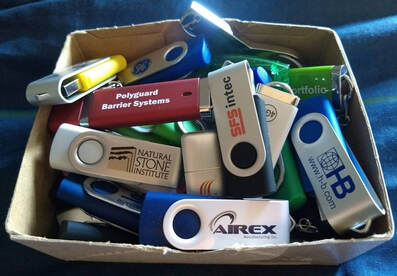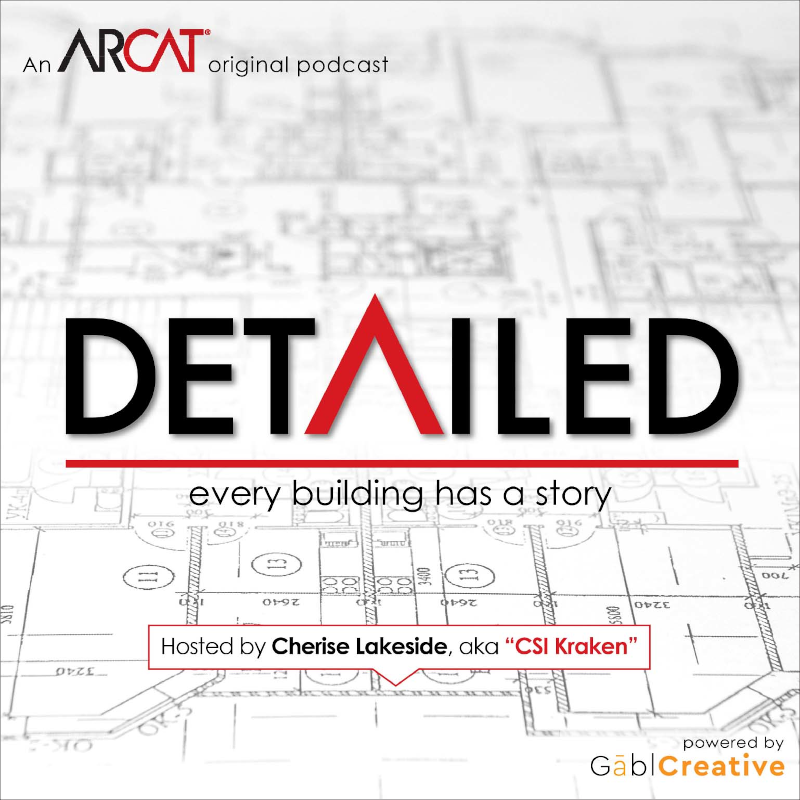|
Contributed by Elias Saltz Like it or not, the architectural product library is a thing of the past. No longer do firms set aside rooms dedicated to shelves covered with hefty binders. The parade of product reps schlepping suitcases filled with paper updates has mostly stopped. Architects' and specifiers' need for up-to-date information, on the other hand, has not abated. My job writing specifications requires me to research multiple products and systems every single day. Product data is now almost exclusively available electronically, and manufacturers are figuring out the best way to present and distribute that information. Many consolidate the information on thumb drives and hand them to architects and specifiers at meetings and product shows. But how useful is that when those thumb drives end up tossed in a box, gathering dust?
Also, it's recognized now that thumb drives are a major cyber security risk; any one of them can be a malware or espionage vector and the product manufacturer may not even know it (every single thumb drive is made in China, and who knows what's hidden in them?!). Also, the data on the drives is current as of the date the drive is made, but quickly gets obsolete. So thumb drives aren't the answer. The only feasible on-demand information source we have, other than old-fashioned picking up the phone or meeting reps in person, is manufacturer websites. I visit dozens of sites for every project I write, and often I struggle to find the information I need. This might be because the sites are poorly designed, require registration, or simply don't have the information. The search bars return useless results. The guide specifications, when available, aren't editable. There are no details. There are no tools to find local reps. Most sites actually contain very thorough information, but there's frequently a learning curve to finding it efficiently because they do counterintuitive things. Often, for example, clicking "I'm an Architect" displays only CEUs, not product information. The time is ripe, I believe, for the Construction Specifications Institute (CSI), a national association most famous for publishing formats adopted by the entire construction industry, to jump into solving this problem. WebFormat (or whatever it would be named) is an idea that has been floating around for a long time, but hasn't yet been implemented. Given the investment CSI has been making in upgrading its technological footprint, the time is ripe to develop this product. What would WebFormat contain? I imagine a single hyperlink on each manufacturer's homepage that would bring us to an index of the available products, perhaps organized in multiple ways (how about drop down options for sorting by MasterFormat number, UniFormat category, and OmniClass table), with a very brief description of the product within the index. The main index page would also have a way to search for local reps and senior technical reps. Upon visiting a specific product, we could immediately find details, product data sheets, photographs, available colors/finishes, guide specs (in MS Word), warranty information, HPD's and EPD's, installer qualifications, and installation instructions. All the information will be organized by every manufacturer in a uniform way. Let's end the endless, frustrating, fruitless web searches, and learn from how MasterFormat and SectionFormat have transformed AEC. CSI needs to begin working on WebFormat, now.
1 Comment
Evan Adams
10/22/2019 02:10:58 pm
A major component of any webformat is historical history and revision dates. I can't say the number of times my hide has been saved by going to the library and pulling out the 19XX or 20YY documentation. Too often standards and specs change, sometimes multiple times per year. When projects go sideways and the 'new' rep shows up with 'new' data having the historical data is invaluable. Further, as I typed that I realized there is another benefit. Our industry (or at least in my area) has become VERY high turnover. We haven't had the same regional rep for same product for more than two years in over a decade.
Reply
Leave a Reply. |
AboutLet's Fix Construction is an avenue to offer creative solutions, separate myths from facts and erase misconceptions about the architecture, engineering and construction (AEC) industry. Check out Cherise's latest podcast
Get blog post notifications hereArchives
March 2022
Categories
All
|


 RSS Feed
RSS Feed
